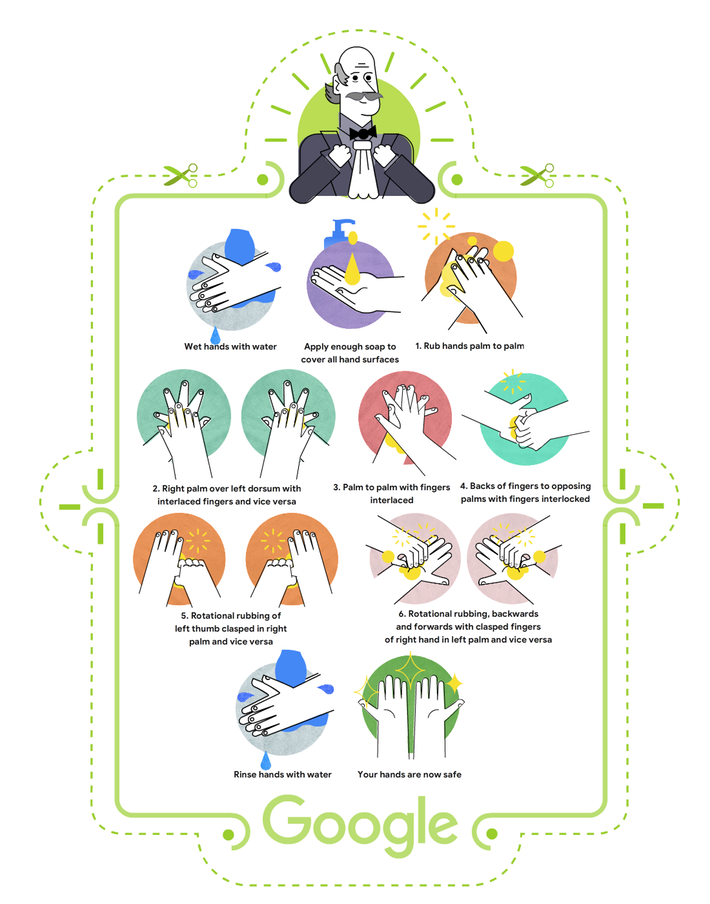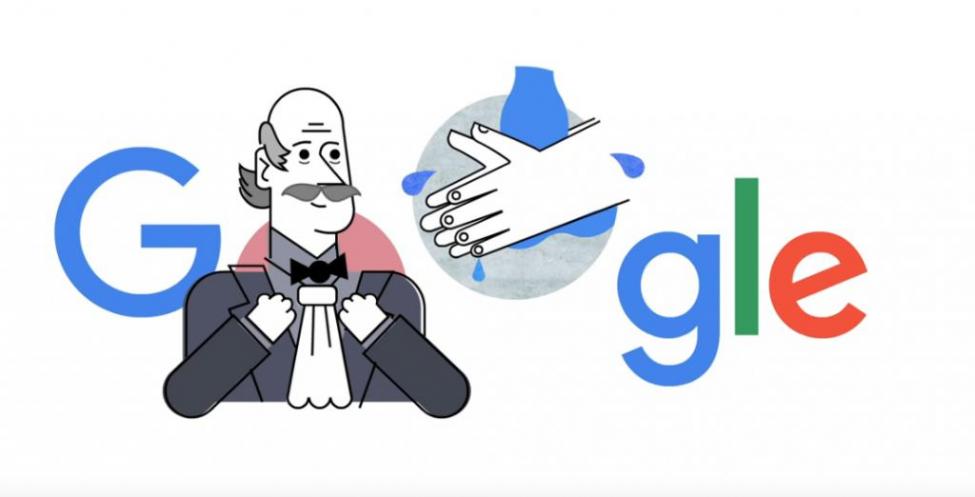As we still fight COVID-19, it’s more important than ever to scrub your hands regularly.
To reinforce the purpose , in today’s Doodle Google honors Ignaz Semmelweis, the “father of infection control,” who first discovered the LIFESAVING POWER of unpolluted hands.
Semmelweis was both a pioneer and a rebel. Despite facing serious keep off from his contemporaries, the 1850s doctor laid the groundwork for contemporary public-health measures. it’s because of him that we all know that HAND WASHING PREVENTS DISEASE.
Semmelweis died over a century ago, but his legacy started a hand washing revolution that continues today.
Semmelweis has helped prevent the deaths of many people from disease and infection — and provided us with one among the simplest tactics to fight COVID-19.
“SAVIOR OF MOTHERS”
Born in 1818, the Hungarian physician discovered the medical benefits of hand washing while working during a n obstetrics ward in a Vienna hospital.
Semmelweis noticed that ladies delivering babies with the assistance of physicians and medical students were quite up to 3 times more likely to develop a fever and die than women whose babies were delivered by midwives or midwife trainees.
The reason why may be a little macabre, but telling. The hospital’s doctors were rushing from case to case — including handling corpses and performing autopsies — before delivering the babies, without washing their hands in between. As a result, they unwittingly carried germs, bacteria, and viruses from cadavers to their living patients, who later died of a disease they called “puerperal fever.”

This infection-ridden environment is sort of unlike a contemporary medical facility, which is cleaned intensively to make sure sterility. But some time past , nobody knew Grey’s Anatomy’s McDreamy’s compulsive “scrub in” habit was lifesaving.
Semmelweis instituted a hand-washing regimen for physicians and medical students within the obstetrics division, forcing them to disinfect their hands with a chlorinated lyme.
He also had staff wash medical instruments before and after procedures.
The deathrate among mothers delivered by physicians plummeted to an equivalent rate because the midwives.
HAND WASHING REVOLUTION
Even though patients survived due to Semmelweis’ foresight, the medical establishment of the time rejected his idea.
They didn’t renew Semmelweis’ contract at the hospital, and he ended up working in another hospital, where he advocated for the importance of unpolluted hands, with limited success.
At the time, most scientists bought into the “miasma theory” — the thought that disease was caused by poisonous vapors, or “bad air.”
Semmelweis spent the remainder of his life struggling to urge people to require his hygiene ideas seriously, a goal that wouldn’t come to fruition until quite 20 years after his death.
Only after Pasteur , Lister , and Koch discovered the “germ theory” of disease did people start to form the connection between washing their hands and preventing illness.
Germ theory argues that disease is primarily caused by micro-organisms — germs, viruses, and bacteria — a thought that’s been borne out by science for over a century.
Still, hand washing itself wouldn’t become a mainstay of public-health promotion until the 1980s — and it had been prompted by a crisis. After a wave of foodborne disease outbreaks and healthcare-associated infections hit the us within the latter half the 20th century, the us Centers for Disease Control finally instituted the primary national hand hygiene guidelines.
Today, it’s almost unimaginable to consider surgeons cutting open patients without scrubbing their hands, or restaurant workers not washing up before preparing food.
Hand washing is arguably the foremost cost-effective, easily accessible tool to remain healthy and coronavirus-free.
Next time you ruin , scrubbing for a minimum of 20 seconds with soap and warm water, you’ll thank Semmelweis.
This articale taken refrence from inverse

